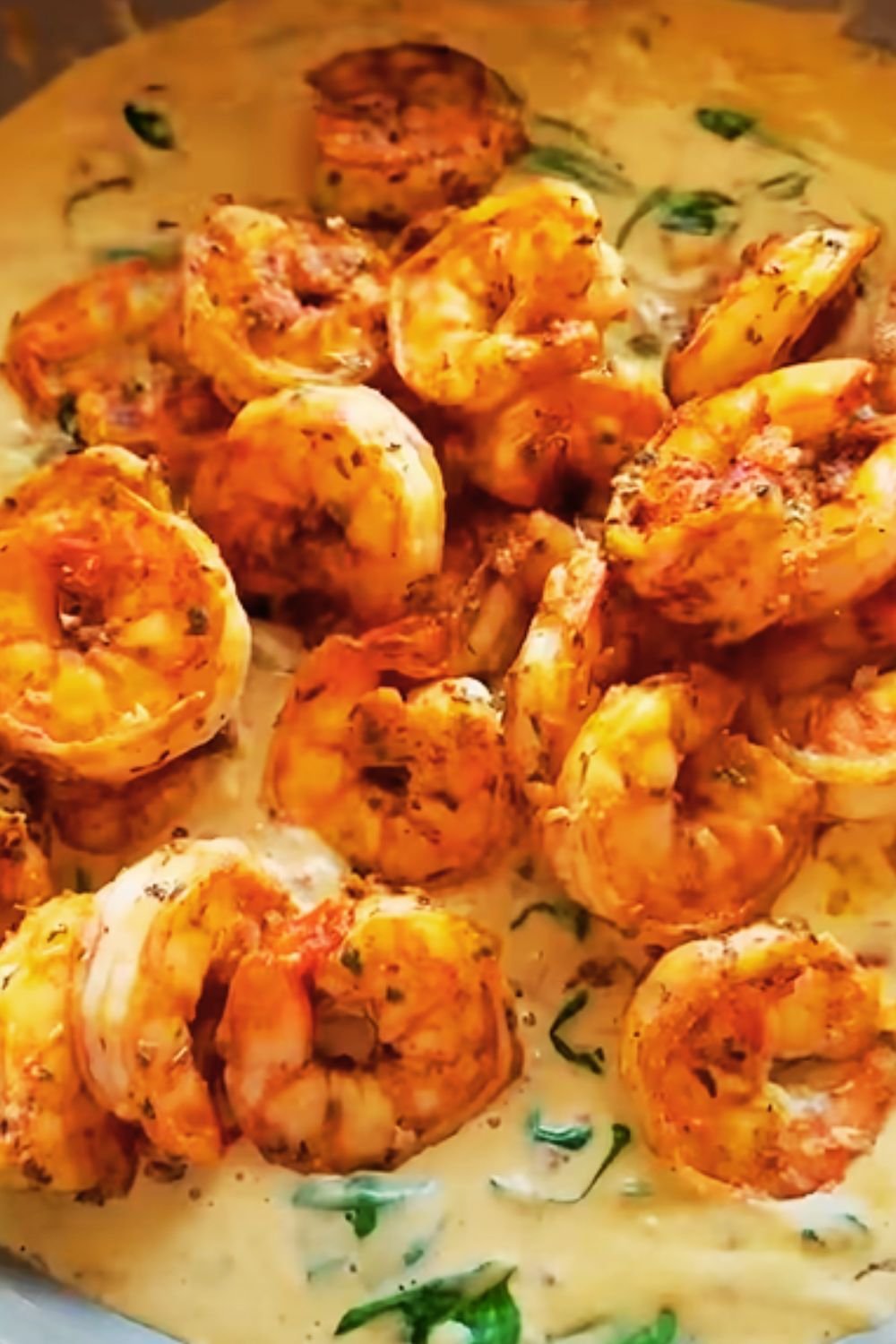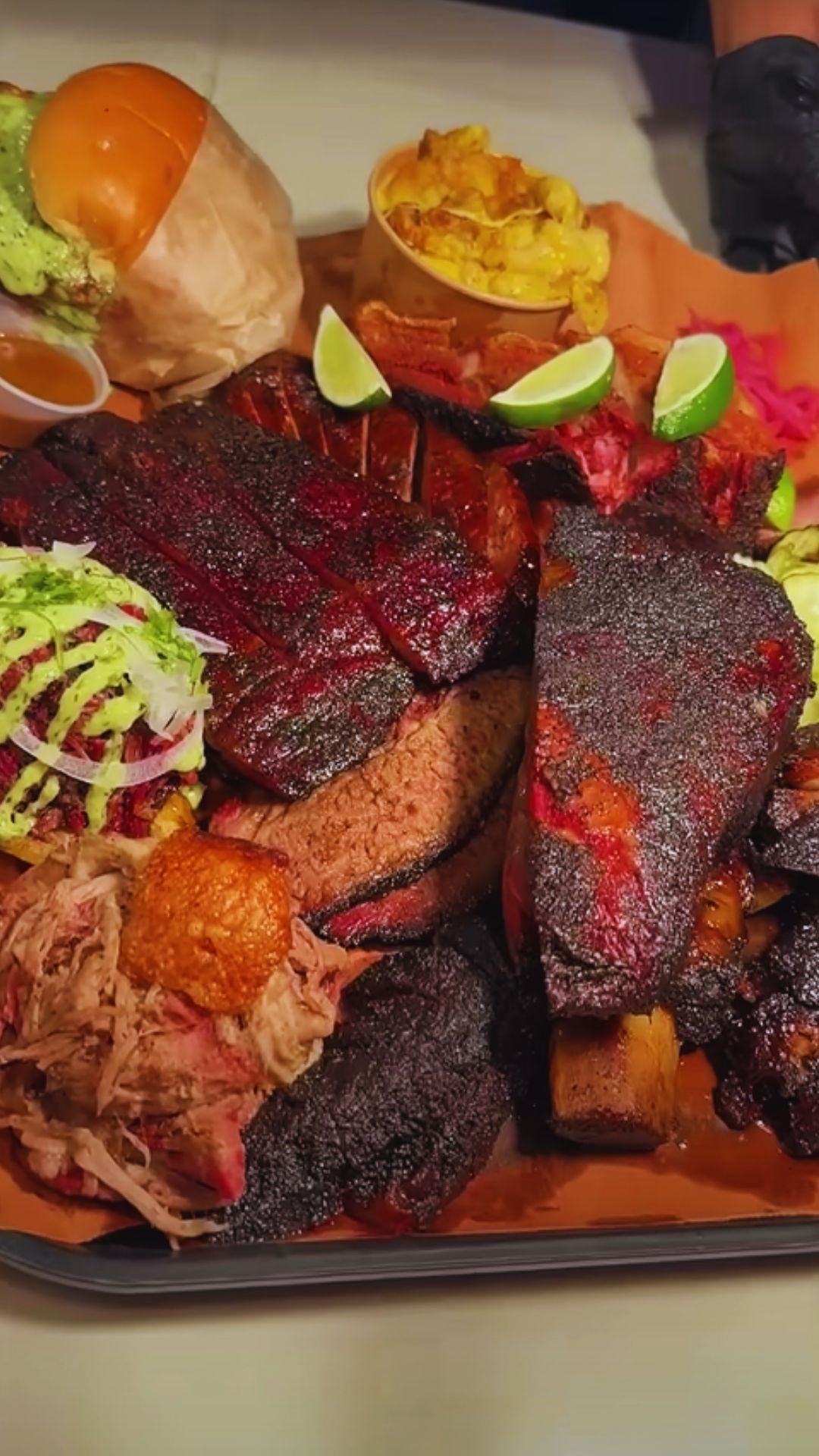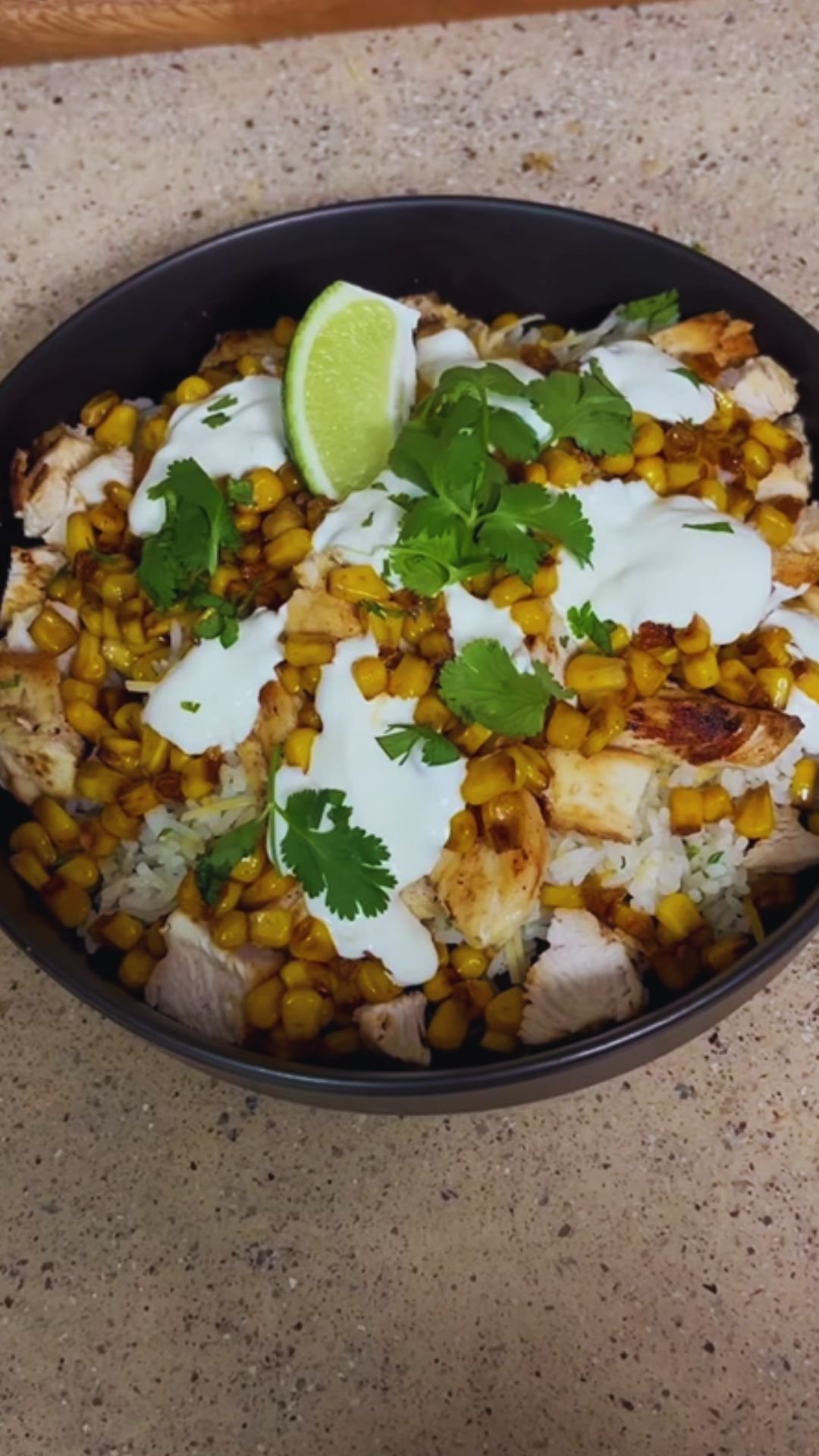There’s something magical about a bowl of seafood chowder that warms not just your body but your soul. Growing up near the Gulf Coast, I learned early that good food isn’t just about flavor—it’s about creating memories around the table. Today, I’m sharing my take on a Cajun-inspired seafood chowder that combines the sweetness of orange-fleshed sweet potatoes with the briny bounty of the sea and that signature Southern kick we all love.
This isn’t your standard New England clam chowder. No, this is a Southern symphony—a rich, complex melody of flavors that tells the story of Louisiana’s vibrant food culture. The sweet potatoes add a velvety texture and natural sweetness that perfectly balances the spicy Cajun seasoning and complements the delicate seafood.
The Magic of Sweet Potatoes in Seafood Chowder
Sweet potatoes might seem like an unusual addition to seafood chowder, but trust me on this one. These vibrant orange tubers bring several game-changing elements to this dish:
- Natural sweetness that balances the savory seafood and spicy Cajun seasonings
- Creamy texture when blended, creating a luxurious mouthfeel without excessive cream
- Nutritional boost with their vitamin A, fiber, and antioxidant content
- Beautiful golden color that makes the chowder visually appealing
I’ve found that sweet potatoes create a more interesting flavor foundation than regular potatoes, and their natural sugars caramelize slightly during cooking, adding depth that white potatoes simply can’t match.
Selecting the Perfect Seafood

The seafood in this chowder is completely customizable based on what’s fresh and available to you. Here’s my guide to selecting the best options:
Shellfish Options:
- Shrimp: Look for fresh or properly frozen raw shrimp, preferably wild-caught. Size 16/20 or 21/25 work perfectly.
- Crab: Lump crabmeat adds luxury, but claw meat is more economical and still delicious.
- Crawfish: A true Cajun addition if you can find them. The tails are what you want.
- Clams/Mussels: These add a beautiful presentation and briny flavor.
Finfish Options:
- Firm white fish: Cod, halibut, grouper, or red snapper all hold up well without falling apart.
- Salmon: Adds beautiful color and omega-3s, though it’s not traditional.
I typically use a combination of shrimp, crab, and a firm white fish for the perfect balance of flavors and textures. Remember that seafood cooks quickly, so we’ll add it near the end of the cooking process.
Authentic Cajun Flavoring
The soul of this dish lies in its seasoning. Authentic Cajun flavoring relies on what Louisiana cooks call the “holy trinity”—onion, celery, and bell pepper—plus garlic and a signature spice blend.
The Holy Trinity:
- Equal parts diced onion, celery, and bell pepper (traditionally green, but red adds nice color)
Cajun Spice Blend:
Rather than reaching for store-bought mixes that often contain excessive salt and additives, I make my own with:
| Spice | Amount | Flavor Profile |
|---|---|---|
| Paprika | 2 tablespoons | Earthy, sweet base |
| Garlic powder | 1 tablespoon | Savory foundation |
| Onion powder | 1 tablespoon | Sweet, aromatic |
| Cayenne pepper | 1-2 teaspoons (adjust to taste) | Heat |
| Dried oregano | 2 teaspoons | Herbaceous notes |
| Dried thyme | 2 teaspoons | Earthy, aromatic |
| Black pepper | 1 tablespoon | Sharp spice |
| Salt | 1 tablespoon | Flavor enhancer |
This homemade blend gives you complete control over the heat level and salt content. Store extra in an airtight container for future recipes.
The Full Recipe
Ingredients:
For the Chowder Base:
- 2 tablespoons olive oil
- 2 tablespoons butter
- 1 large yellow onion, diced (about 2 cups)
- 2 celery stalks, diced (about 1 cup)
- 1 red bell pepper, diced (about 1 cup)
- 1 green bell pepper, diced (about 1 cup)
- 6 garlic cloves, minced
- 2 tablespoons homemade Cajun seasoning (or to taste)
- ¼ cup all-purpose flour
- 4 cups seafood stock (or chicken stock in a pinch)
- 2 cups whole milk
- 1 cup heavy cream
- 2 large orange-fleshed sweet potatoes, peeled and cubed (about 3 cups)
- 1 bay leaf
- 2 sprigs fresh thyme
- 1 tablespoon Worcestershire sauce
- 1 teaspoon hot sauce (like Crystal or Tabasco), plus more to taste
- 2 tablespoons tomato paste
Seafood (2 pounds total, mix and match):
- 1 pound medium shrimp, peeled and deveined
- 8 ounces firm white fish (cod, halibut, etc.), cut into 1-inch chunks
- 8 ounces lump crabmeat or crawfish tails
For Garnish:
- ¼ cup fresh parsley, chopped
- 3 green onions, thinly sliced
- Fresh lemon wedges
- Extra hot sauce
Equipment Needed:
| Equipment | Purpose |
|---|---|
| Large heavy pot or Dutch oven | Main cooking vessel |
| Sharp chef’s knife | For prep work |
| Cutting board | For safely chopping ingredients |
| Wooden spoon | For stirring without scratching pot |
| Measuring cups and spoons | For accurate measurements |
| Blender or immersion blender | For partially pureeing |
Instructions:
- Prep the sweet potatoes: In a medium pot, boil the sweet potato cubes in salted water until just fork-tender, about 8-10 minutes. Drain and set aside. (We’ll use half for texture and puree the rest.)
- Create the flavor base: In a large Dutch oven or heavy-bottomed pot, heat the olive oil and butter over medium heat until the butter melts. Add the holy trinity (onion, celery, bell peppers) and cook until softened, about 5-7 minutes. Add the garlic and cook for another minute until fragrant.
- Build the roux: Sprinkle the Cajun seasoning over the vegetables and stir to coat. Sprinkle the flour over the mixture and cook, stirring constantly, for 2-3 minutes to remove the raw flour taste. This creates a flavorful roux that will thicken our chowder.
- Create the creamy base: Gradually whisk in the seafood stock, whisking continuously to prevent lumps. Add the bay leaf, thyme sprigs, Worcestershire sauce, and tomato paste. Bring to a simmer and cook for 10 minutes to allow the flavors to meld.
- Add dairy and sweet potatoes: Pour in the milk and heavy cream. Take about half of the cooked sweet potatoes and add them directly to the pot. Transfer the other half to a blender with a ladle of the liquid and puree until smooth. Add this sweet potato puree back to the pot—this creates a naturally thickened base with wonderful texture contrast.
- Simmer gently: Let the chowder simmer (don’t boil!) for about 15 minutes, stirring occasionally until it starts to thicken. Season with hot sauce, salt, and pepper to taste.
- Add the seafood: First, add any firm white fish pieces and simmer for 2 minutes. Then add the shrimp and cook for another 2-3 minutes until they just turn pink. Finally, gently fold in any pre-cooked seafood like crabmeat or crawfish tails and heat through for 1-2 minutes. You want to be careful not to overcook the seafood!
- Final touches: Remove the bay leaf and thyme sprigs. Taste and adjust seasonings—does it need more Cajun spice, hot sauce, or salt? This is the moment to perfect the flavor.
- Serve: Ladle the chowder into warmed bowls. Garnish with fresh parsley, sliced green onions, and a squeeze of fresh lemon juice.
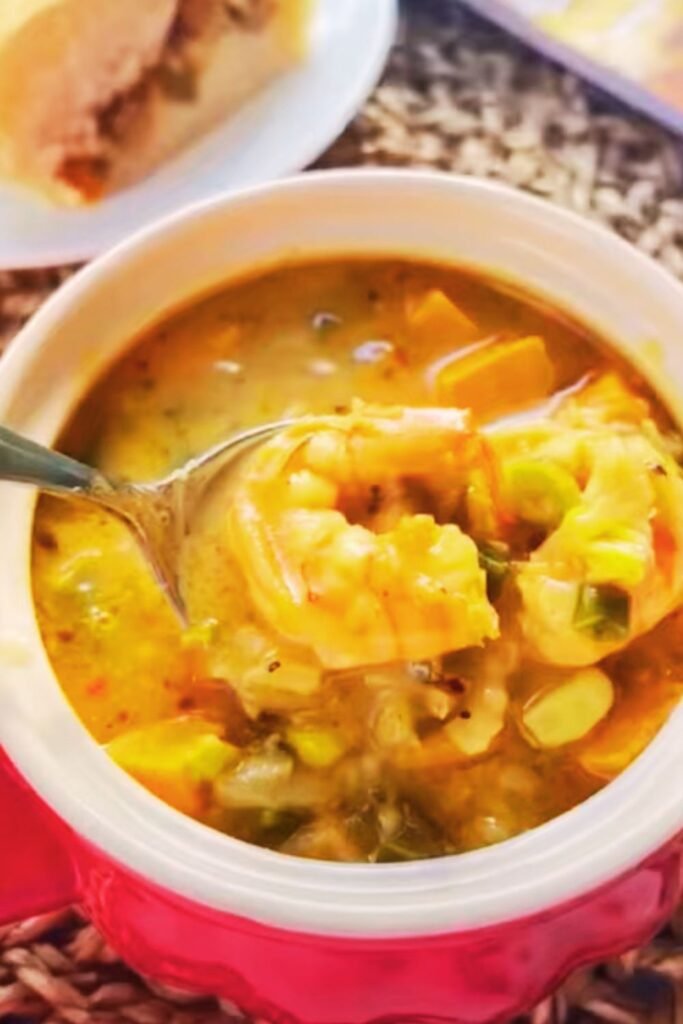
Make-Ahead Tips and Storage
Like many soups and stews, this chowder actually improves with time as the flavors meld together. Here’s how to work with timing:
Make-Ahead Approach:
You can prepare the chowder base (through step 6) up to 2 days ahead and refrigerate it. When ready to serve, gently reheat the base and proceed with adding the seafood.
Storage Times:
| Storage Method | Maximum Time | Notes |
|---|---|---|
| Refrigerator | 2-3 days | Store in airtight container |
| Freezer | Not recommended | Dairy and seafood don’t freeze well together |
Reheating Guidelines:
Reheat gently over low heat, stirring occasionally. Never bring seafood chowder to a boil when reheating, as this can make the seafood tough and the dairy separate.
Serving Suggestions
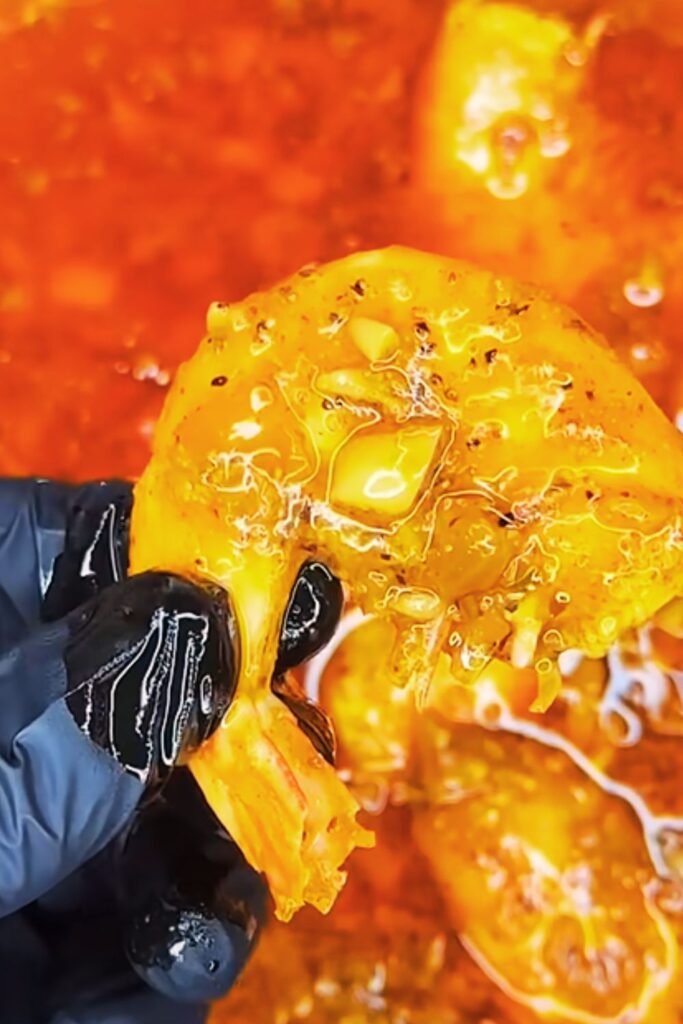
This hearty chowder deserves the right accompaniments to make a complete meal:
Perfect Pairings:
- Southern-style cornbread: Nothing beats the combination of sweet, crumbly cornbread alongside this spicy chowder.
- Crusty French bread or sourdough: Ideal for sopping up every last drop of the flavorful broth.
- Simple green salad: A light, acidic salad with vinaigrette provides pleasant contrast.
- Iced sweet tea: The classic Southern beverage cuts through the richness of the chowder.
- Sparkling water with lemon: A refreshing, cleansing beverage that won’t overwhelm the flavors.
Nutritional Benefits
This isn’t just a delicious meal—it’s also packed with nutrition. Here’s what you’re getting in each hearty bowl:
| Nutrient | Source | Benefit |
|---|---|---|
| Lean protein | Seafood | Muscle building and repair |
| Omega-3 fatty acids | Fish, particularly salmon if used | Heart and brain health |
| Vitamin A | Sweet potatoes | Vision and immune function |
| Vitamin C | Bell peppers | Immune support and collagen production |
| Selenium | Seafood | Antioxidant protection |
| Zinc | Shellfish | Immune support and wound healing |
| B vitamins | Seafood | Energy production and nervous system support |
Dietary Modifications
This chowder can be adapted for various dietary needs:
Gluten-Free Version:
Replace the all-purpose flour with 2 tablespoons of cornstarch dissolved in cold water, added after the stock has been incorporated.
Dairy-Free Option:
Substitute the milk and cream with full-fat coconut milk or a combination of coconut milk and almond milk. Note that this will add a subtle coconut flavor that works surprisingly well with the Cajun spices.
Lower-Calorie Adaptation:
Use half-and-half instead of heavy cream, and increase the proportion of pureed sweet potato to naturally thicken the chowder with less dairy.
Common Questions & Answers
Q: Can I use frozen seafood for this chowder?
A: Absolutely! Frozen seafood is often flash-frozen right after catching, preserving its freshness. Just make sure to thaw it properly in the refrigerator overnight, and pat it dry before adding it to the chowder.
Q: My chowder isn’t as thick as I’d like. How can I thicken it?
A: The easiest method is to blend more of the sweet potatoes and add them back to the pot. Alternatively, you can make a quick slurry with 1 tablespoon cornstarch and 2 tablespoons cold water, then stir this into the simmering chowder.
Q: This recipe seems spicy. How can I tone down the heat?
A: Start by reducing the cayenne pepper in your Cajun seasoning blend and use less of the seasoning blend overall. You can always add more after tasting! Also, serving the chowder with a dollop of sour cream can help cool the heat.
Q: Can I make this chowder with just one type of seafood?
A: Definitely! While I love the variety of textures from different seafood, this chowder is delicious made with just shrimp or just fish. Use what’s freshest and most available to you.
Q: My family doesn’t like sweet potatoes. Can I substitute regular potatoes?
A: Yes, you can use Yukon gold or russet potatoes instead. The flavor profile will change, becoming less sweet and more traditional, but still delicious. You might want to add a pinch of smoked paprika for added depth.
Q: How can I tell when the seafood is cooked properly?
A: Shrimp are done when they turn pink and curl into a C-shape (overcooked shrimp curl into a tight O-shape). Fish is done when it turns opaque and flakes easily with a fork. Remember that seafood continues cooking from residual heat, so it’s better to slightly undercook than overcook.
Personal Tips from My Kitchen
After making this chowder countless times, I’ve discovered a few tricks that take it from good to unforgettable:
- Layer your seafood additions: Different types of seafood cook at different rates. Always add the firmest fish first, then shrimp, and pre-cooked seafood like crab last.
- Save some sweet potato chunks: While pureeing some sweet potatoes creates a silky texture, keeping some in chunks provides a delightful textural contrast.
- Don’t skip the acid: That final squeeze of lemon juice right before serving is crucial—it brightens all the flavors and cuts through the richness.
- Invest in good seafood stock: If you can make your own from shrimp shells and fish trimmings, fantastic! If not, look for high-quality store-bought versions with minimal additives.
- Let it rest: Like many complex dishes, this chowder benefits from 15-20 minutes of resting time after cooking. This allows the flavors to fully integrate.
Why This Recipe Works
What makes this particular recipe a standout among seafood chowders is the thoughtful balance of flavors and textures:
- The sweet potatoes provide natural sweetness and creamy texture
- The Cajun seasoning delivers complexity and heat
- The seafood offers briny richness and protein
- The dairy components add luxurious mouthfeel
- The vegetables contribute freshness and aromatics
The result is a chowder that feels both comforting and exciting—familiar enough to be soothing but unique enough to be memorable. It’s the perfect dish for gathering loved ones around your table for a meal that nourishes both body and soul.
Whether you’re serving this for a special occasion or a cozy weeknight dinner, I hope this Cajun Sweet Potato Seafood Chowder brings as much joy to your table as it has to mine. There’s something particularly satisfying about watching someone take that first spoonful and seeing their eyes light up with surprise and delight at the complex flavors dancing across their palate.
Happy cooking, and as we say down South, “Laissez les bons temps rouler!”—Let the good times roll!
